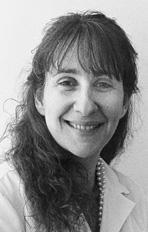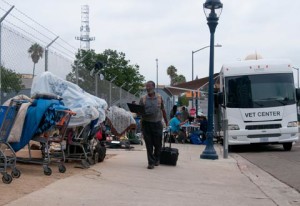
Today I had the privilege of interviewing Dr. Lillian Gelberg, Professor and Vice Chair for Academic Affairs in the Department of Family Medicine and Professor in the Department of Health Policy and Management at UCLA. She’s a family physician as well as a health services researcher studying how to make vulnerable populations healthier.
BlackBoxPhD 3-Point Checklist: How to be a Better Health Care Provider
- Being a health care provider shouldn’t be a solo act. We use multidisciplinary teams in research and we need to use them in medicine too.
- Symptoms and disease are important, but preventive care might be even more important. Primordial and preventative care is going to continue to become a bigger part of medicine in the coming years.
- People need to balance their work, personal and spiritual lives. Time away for things like religion and spirituality are important for health, success, and appreciating life. If you have kids, remember to appreciate them while they’re still young and you have your health. The same goes for your parents. The years go by in a blink.
Lillian, thanks for speaking with us today. Can you tell us a little bit about what you do?
My name is Lillian Gelberg and I’m a Professor of Family Medicine and Public Health at UCLA and at the Los Angeles Veterans Administration (VA). I work with vulnerable populations trying to understand how we can develop methodologies for health promotion and disease prevention. Particularly around the areas of substance use prevention, healthy eating, and physical activity by using novel technologies to reduce the burden of primary care in community health settings.
What are major issues you’ve found as a clinician and researcher that you’re trying to address?
Patients are generally very interested in health and wellbeing, but they don’t have the tools necessary to be able to do it. Their primary care providers are overwhelmed and don’t have the tools, bandwidth or resources to efficiently and effectively address health behavior change. Social determinants of health are really key, and neighborhood and community resources are key in interacting with this. It’s a medical, public health, and community health integration t hat is very necessary. At the VA, I’m working with homeless veterans and we’ve found that things like housing and substance abuse are health–if you put people in neighborhoods with supportive housing, that’s great, but if you put it in neighborhoods with high rates of poverty, drug and alcohol use, and low rates of healthy eating venues, it’s very difficult to be able to help a person, even if they are motivated to improve their health.
hat is very necessary. At the VA, I’m working with homeless veterans and we’ve found that things like housing and substance abuse are health–if you put people in neighborhoods with supportive housing, that’s great, but if you put it in neighborhoods with high rates of poverty, drug and alcohol use, and low rates of healthy eating venues, it’s very difficult to be able to help a person, even if they are motivated to improve their health.
The other area that is very important these days is using novel means of technology and we’ve been using a variety of approaches for screening patients using novel technologies while still maintaining that personal contact that many of them cherish very much.
One complaint is that doctors prescribe medicine, but it sounds like you see a holistic view. It’s not just about prescribing medication–there are a lot of other areas of health and wellbeing that are important for the patient and physician to be involved in?
We were working with a team in Australia, and it was fascinating because they could write a prescription for community resources. For example, writing out a prescription to a gym or nutritional program or counseling and these resources would be covered.
Even in Mexico, connected to every primary clinic is a wellness clinic, which is where they address a lot of the health behavior issues, a lot of these come up in the primary care visits.
What are some successes that you’ve seen for bringing in multidisciplinary teams for clinical care?
Through the interventions that we’ve developed, we’ve not only worked very closely with physicians, nurses and administrators in the federally qualified health centers (FQHCs) but we’ve also included faculty and grad students on the technology side– incorporating computer science, engineering, and medical informatics, as well as psychology for health behavior change. Now we’re even working with microbiologists to document health behavior change at a biomarker level.
Multidisciplinary work is so exciting and interesting, and we’re also working with urban planning experts. We’re looking at how we can design neighborhoods and housing so that they promote health. That has been a dream come true– we now have a preventative medical physician who has a PhD in urban planning!
Learning it’s important to work with technologists, microbiologists, urban planners will result in successes for patients. How are you bringing this work to the clinical level?
One of the things we’ve been doing is working with the behavioral science and IT teams for taking novel approaches and implementing them into routine care. At the VA, some of the people I work with have been doing amazing things, such as building teams to provide care to homeless veterans with psychologists, addiction medicine specialists, social workers, a psychiatrist, a medical legal partnership expert, peer support and outreach workers, in addition to medical workers.
Over your career, what has been the most important shift in patient care? What do you think is important for medical students or others entering the field?
To not lose sight of their humanity as a physician. With the change in complexity and multi-morbidity, being able to have teams that focus on the true World Health definition of health– having teams that can identify early precursors of disease where the more chronic stages could be prevented, and primordial prevention that I think is so important.
As a family doctor, I believe primary prevention and primordial prevention is where we need to focus. We need to start with the social determinants, and need to be involved in bringing that in and making our neighborhoods, communities and families safe and healthy for people.
It is also important to use novel technologies, that is how we will reach the younger generation in many ways. Especially with population-based health, a large number of people don’t come in for care–how do we reach them. They’re all using social media, that will be a way in part to bring them into the fold.
When I was a resident, it was very much based on the community-oriented primary care model. As a physician, you were not only responsible for patients coming into your community health center, but also the surrounding neighborhood . With health technology now, it’s much easier to “go door to door”
What are your thoughts on the regulatory landscape, such as the effects of the Affordable Care Act?
I’m very excited. It’s a major innovation to have Americans have access to health insurance. There are some tricky things that need to be worked out, especially with electronic medical records. They are so powerful, and there are lots of issues coming up for both providers and patients that can promote health and wellbeing and can affect health and wellbeing of patients and providers.
I’ll shift topics now – we’ve talked about the importance of religion in your life. Can you share how religion plays a role in your life as a clinician and researcher?
As a researcher, educator, clinician – we could really be working every day of the week. As we are talking to our patients about health and wellbeing, we know that the research shows that we are much more productive if we don’t treat ourselves as human doings and treat ourselves as human beings.
Shabbat is the most wonderful gift that we have. The technology goes off, the family is the focus, spirituality and getting to a bigger vision for ourselves, our families and communities. It’s an amazing experience. For getting into the values and lifestyles that promote compassion and kindness, you have to pause to think about the bigger picture of where we are, and I find that prayer and meditation, for me, is very important.
A lot of academics think religion is a cause of problems, whereas you’re explaining it as a source for reflection and peace. How have you been able to keep the balance – being in the academic community and keeping your religious practices?
With the increasing integration of complementary and alternative medicine and recognition of its benefits, aspects of mindfulness and meditation are sort of being interwoven now.

Pingback: getpaidtowatchacommercial
Pingback: Pendaftaran CPNS Kemenkumham
Pingback: make money with a iphone
Pingback: pezevenk
Pingback: In Vitro ADME
Pingback: DMPK
Pingback: wiet hash kopen Nederland
Pingback: jeux de friv
Pingback: Stix Events Company in Hyderabad
Pingback: iq human
Pingback: diyala Aws
Pingback: political_iq
Pingback: pelaksanaan cpns 2018
Pingback: Appliance repair North York
Pingback: emergency local locksmith service richmond va
Pingback: green coffee
Pingback: Digital Marketing Agency
Pingback: daftar cpns 2018
Pingback: cmovieshd
Pingback: empresa de informática
Pingback: redes informáticas
Pingback: __p1
Pingback: park city real estate
Pingback: Brand Reputation Online
Pingback: satta matka, satta king, satta, matka, kalyan matka
Pingback: Premature Ejaculation
Pingback: buy csgo accounts
Pingback: PK Studies in Rats
Pingback: free forex signals
Pingback: Bangalore Escorts
Pingback: Kolkata Escorts
Pingback: Goa Escorts
Pingback: Ambika Ahuja Jaipur Escorts
Pingback: NEHA TYAGI MODEL JAIPUR ESCORTS
Pingback: JAIPUR ESCORTS ALIYA SINHA
Pingback: BANGALORE COMPANION ESCORTS
Pingback: Dhruvi Jaipur Escorts
Pingback: JAIPUR ESCORTS MODEL DRISHYA
Pingback: Jiya Malik High Profile Jaipur Escorts Model
Pingback: FUN WITH JAIPUR ESCORTS PUJA KAUR
Pingback: XXX BANGALORE ESCORTS
Pingback: Selly Arora Independent Bangalore Escorts
Pingback: Enjoy With Jaipur Escorts Tanisha Walia
Pingback: RUBEENA RUSSIAN BANGALORE ESCORTS
Pingback: Bristy Roy Independent Bangalore Escorts
Pingback: Bangalore Escorts Sneha Despandey
Pingback: SEO agencies
Pingback: Ruby Sen Kolkata Independent Escorts
Pingback: Diana Diaz Goa Independent Escorts Services
Pingback: Diksha Arya Independent Escorts Services in Kolkata
Pingback: Devika Kakkar Goa Escorts Services
Pingback: Rebecca Desuza Goa Independent Escorts Services
Pingback: Yamini Mittal Independent Escorts Services in Goa
Pingback: Simmi Mittal Kolkata Escorts Services
Pingback: Kolkata Escorts Services Ragini Mehta
Pingback: Navya Sharma Independent Kolkata Escorts Services
Pingback: Elisha Roy Goa Independent Escorts Services
Pingback: Alisha Oberoi Kolkata Escorts Services
Pingback: Divya Arora Goa Independent Escorts Services
Pingback: Simran Batra Independent Escorts in Kolkata
Pingback: Ashna Ahuja Escorts Services in Kolkata
Pingback: Goa Escorts Services Drishti Goyal
Pingback: Mayra Khan Escorts Services in Kolkata
Pingback: Sofia Desai Escorts Services in Goa
Pingback: Sruthi Pathak Escorts in Bangalore
Pingback: Ambika Ahuja Jaipur Escorts Services
Pingback: latestvideo sirius682
Pingback: comment294
Pingback: comment403
Pingback: comment473
Pingback: comment919
Pingback: comment16
Pingback: comment599
Pingback: comment874
Pingback: comment286
Pingback: comment289
Pingback: comment553
Pingback: comment682
Pingback: comment751
Pingback: comment412
Pingback: comment837
Pingback: comment468
Pingback: comment696
Pingback: comment334
Pingback: comment43
Pingback: comment805
Pingback: comment798
Pingback: comment212
Pingback: comment213
Pingback: comment312
Pingback: comment980
Pingback: comment806
Pingback: comment766
Pingback: comment172
Pingback: comment469
Pingback: comment122
Pingback: comment105
Pingback: comment544
Pingback: comment26
Pingback: comment804
Pingback: comment186
Pingback: comment378
Pingback: comment928
Pingback: comment755
Pingback: Sruthi Pathak Bangalore Female Escorts
Pingback: new siriustube155 abdu23na4341 abdu23na89
Pingback: freshamateurs444 abdu23na7752 abdu23na88
Pingback: sfgjidfgn600 afeu23na5616 abdu23na51
Pingback: hd videos tubepla.net590 afeu23na4951 abdu23na3
Pingback: Sruthi Pathak Bangalore Escorts Services
Pingback: Trully Independent Bangalore Escorts
Pingback: Trully Independent Bangalore Escorts Services
Pingback: Fiza Khan Kolkata Independent Call Girls Services
Pingback: Ruchika Roy Kolkata Escorts Call Girls Services
Pingback: Escorts in Kolkata
Pingback: Kolkata Independent Escorts
Pingback: Fiza Khan Kolkata Independent Escorts Call Girls Services
Pingback: Fiza Khan Kolkata Call Girls Escorts Services
Pingback: Diksha Arya Kolkata Escorts Call Girls Services
Pingback: Diksha Arya Kolkata Independent Escorts Call Girls Services
Pingback: Runescape accounts
Pingback: Escorts
Pingback: Nidika Offer Call Girls in Bangalore
Pingback: Cheap
Pingback: Hyderabad Escorts Call Girls Services
Pingback: Bangalore Cheap Escorts Sevices
Pingback: Pune Escorts Services Call Girls
Pingback: Goa Escorts Call Girls Services
Pingback: Bangalore Escorts Services
Pingback: lucknow-escorts-models.jigs
Pingback: indian escorts in dubai
Pingback: call girls in delhi
Pingback: call girls
Pingback: bangalore call girls
Pingback: call girls
Pingback: bangalore call girls
Pingback: anshika
Pingback: independent escorts in aerocity
Pingback: call girls in lucknow
Pingback: ghaziabad escorts
Pingback: ghaziabad escorts